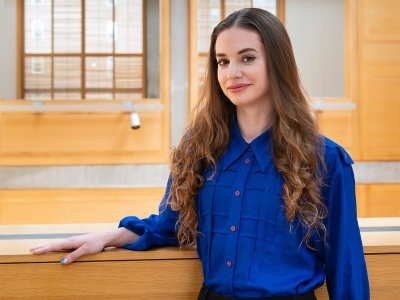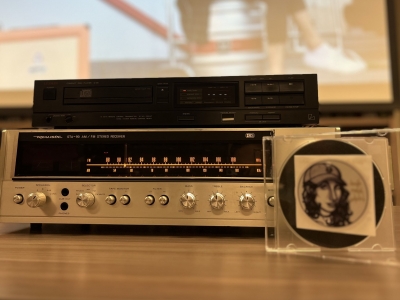Just as it is about to turn 21, we are saying goodbye to Capital News Online – the first digital publication produced by journalism students at Carleton – and hello to Capital Current – an exciting new local news venture.
Capital News Online was born in 1997 at a time when the World Wide Web was something people accessed with a dial-up phone connection, Netscape Navigator was the browser of choice, and Mark Zuckerberg was just old enough for junior high.
Even then, before Google, Twitter or smartphones were created, it was clear that the Internet was going to change the way journalism would be produced, distributed and consumed.
At Carleton we wanted to provide an opportunity for our students to experiment with online reporting and publishing. Professors Dan Pottier and Mary McGuire designed and launched a new workshop course in which senior students covered the affairs of the nation’s capital and produced their work exclusively online. With Capital News Online Carleton broke new ground by becoming the first journalism school in Canada where students produced entirely original content for the Web on a bi-weekly basis throughout the school year.
It was a huge challenge to get those first stories online given the technology at the time but we were all proud of our first issue at the time, as quaint as it looks now. Our lead story in that first edition was written by Emmanuelle Latraverse, now a reporter with Radio Canada on Parliament Hill and the headline on the editors’ note said Please Be Kind.
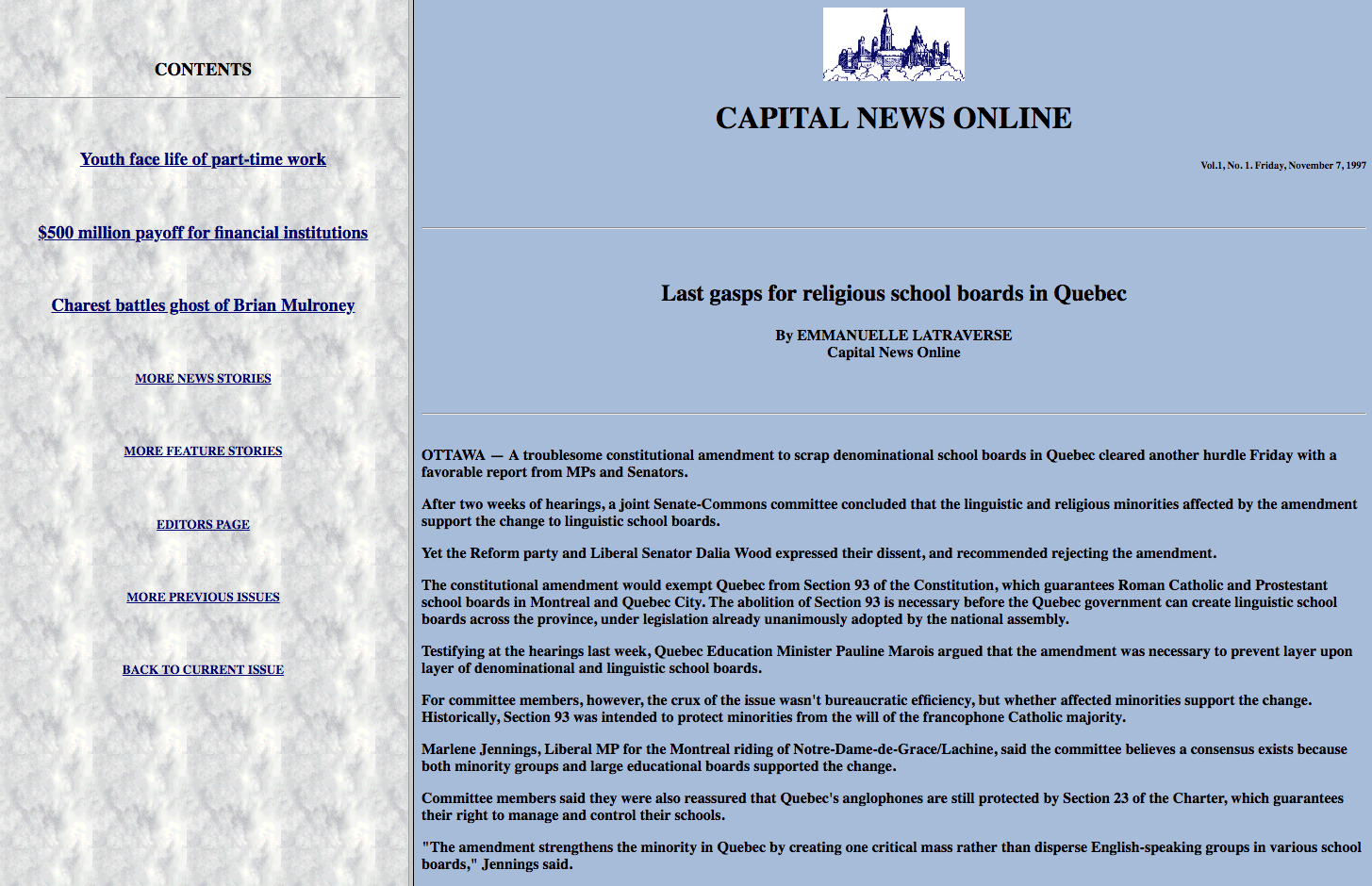
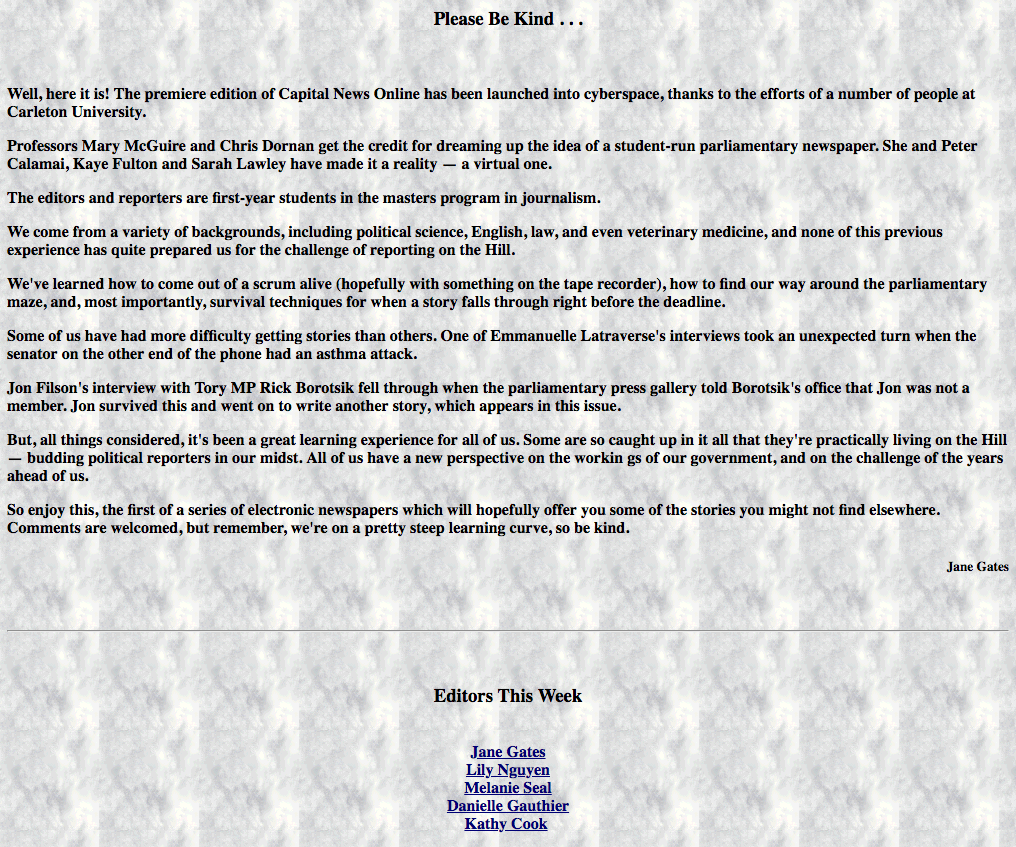
One of those first editors was Melanie Seal, now Melanie Coulson. She became an accomplished journalist and a Senior Editor at the Ottawa Citizen and is now the Editor in Chief at Export Development Canada and an instructor at Carleton teaching Digital Media Production in our communications and media studies program.
She has fond memories of those early days.
“Capital News was where I fell in love with online digital news — that we could be fast, accurate and smart. Or, at least that was the goal. Cap News was teamwork in the digital age — we had no idea what we were doing, and everything was a lesson. I also remember a lot of deadline pressure. Some things never change. Even when you go digital.”
The director of the journalism school at the time, Chris Dornan, described the course as a living laboratory for our students. In 2001 he wrote that at a time when mainstream news organizations were “groping their way forward” on the Internet “the students who staff Capital News have been more innovative in trying new ways of telling stories and delivering pertinent content appropriate to the new medium.”
Our experiment was honoured in 2001 when Capital News Online won First Place in the student journalism category in a competition sponsored by the Association for Education in Journalism and Mass Communication, a body representing university schools of journalism across North America. Mary McGuire went to Washington, D.C., to receive the award on behalf of the school and the students.
In the years since, as technology, software and cameras changed, CapNews underwent many facelifts, thanks, in large part, to the remarkable design skills of our long-time digital technologist Roger Martin, as well as a change in its mandate. Throughout the changes it has remained a showcase for our students’ innovative multimedia storytelling skills.

1998
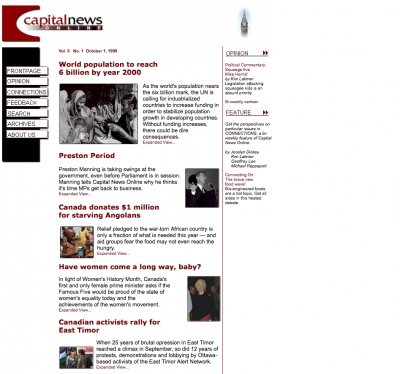
1999
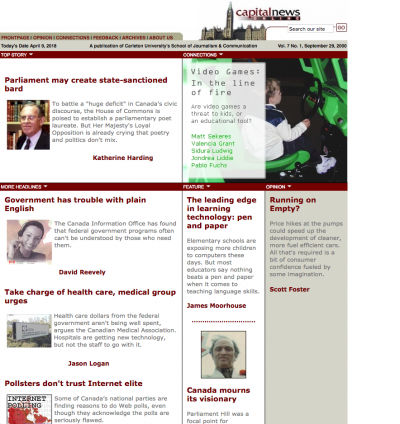
2000

2002
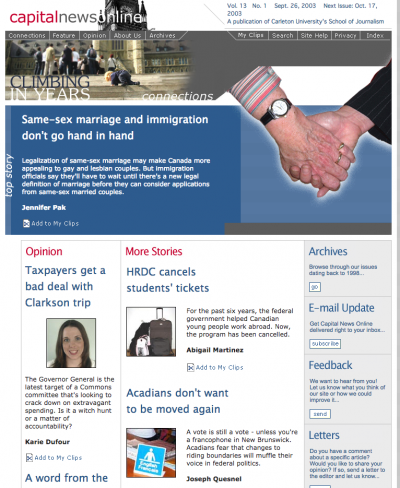
2003
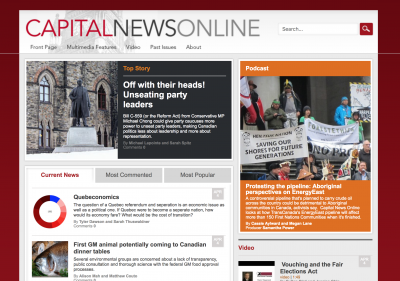
2009
Professors Chris Dornan, Chris Waddell and Paul Adams all taught the course at various times. Then, in 2014 Professor Aneurin Bosley, once a student in the course in its early days, joined the faculty and took over the course and the publication. Under his direction Capital News Online, has become a site where our students produce data-driven, multimedia story packages for the wider community.
“The focus of the workshop has always been on producing news for digital platforms,” said Bosley. “But of course the technology has changed in many ways and the workshop has reflected that change.”
In recent years, students have focused on mapping, 360-degree photography and data visualization, among other things.
“One of our recent stories was about gang and gun violence,” said Bosley. “Part of the context for this story is in the numbers and the data. We think it’s increasingly important for us to visualize this data so readers can see it and interact with it for themselves.”
While we are saying goodbye to Capital News Online, we are launching a new venture to allow our students to continue reporting and publishing in new and innovative ways online. Starting this fall we will introduce Capital Current — a new dynamic interactive online publication which will merge the journalism program’s biweekly Centretown News print newspaper and Capital News Online. Our students will tell stories in a variety of digital formats about Ottawa’s geographic communities, as well as its demographic communities, such as Indigenous, immigrant and LGBTTQ+ groups.
Follow this link for more about Capital Current
Tuesday, May 8, 2018 in Journalism News, News
Share: Twitter, Facebook
